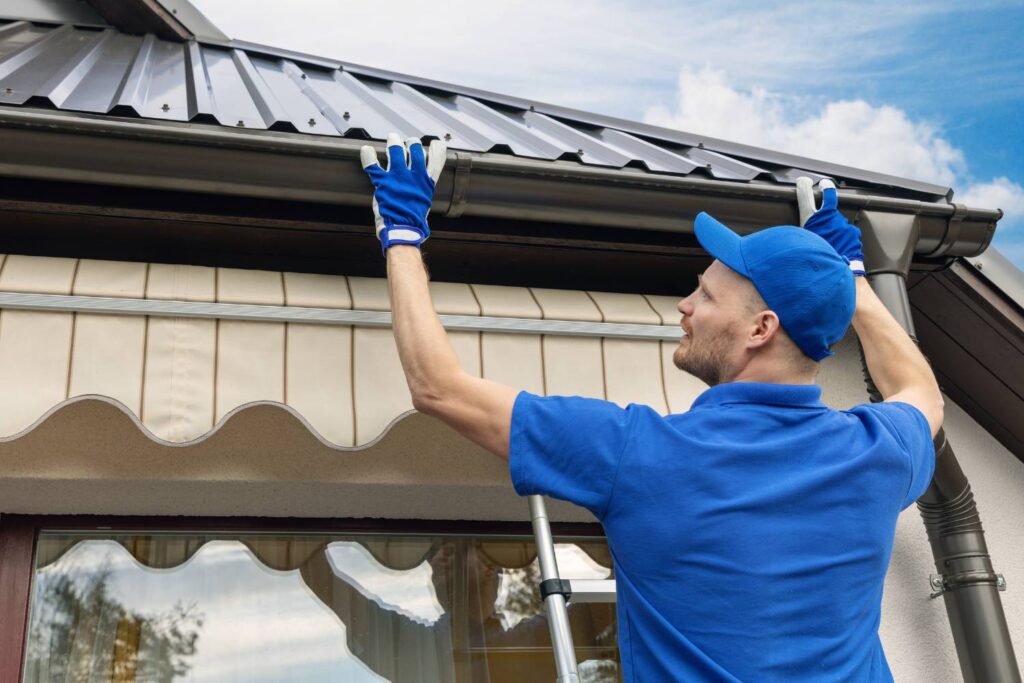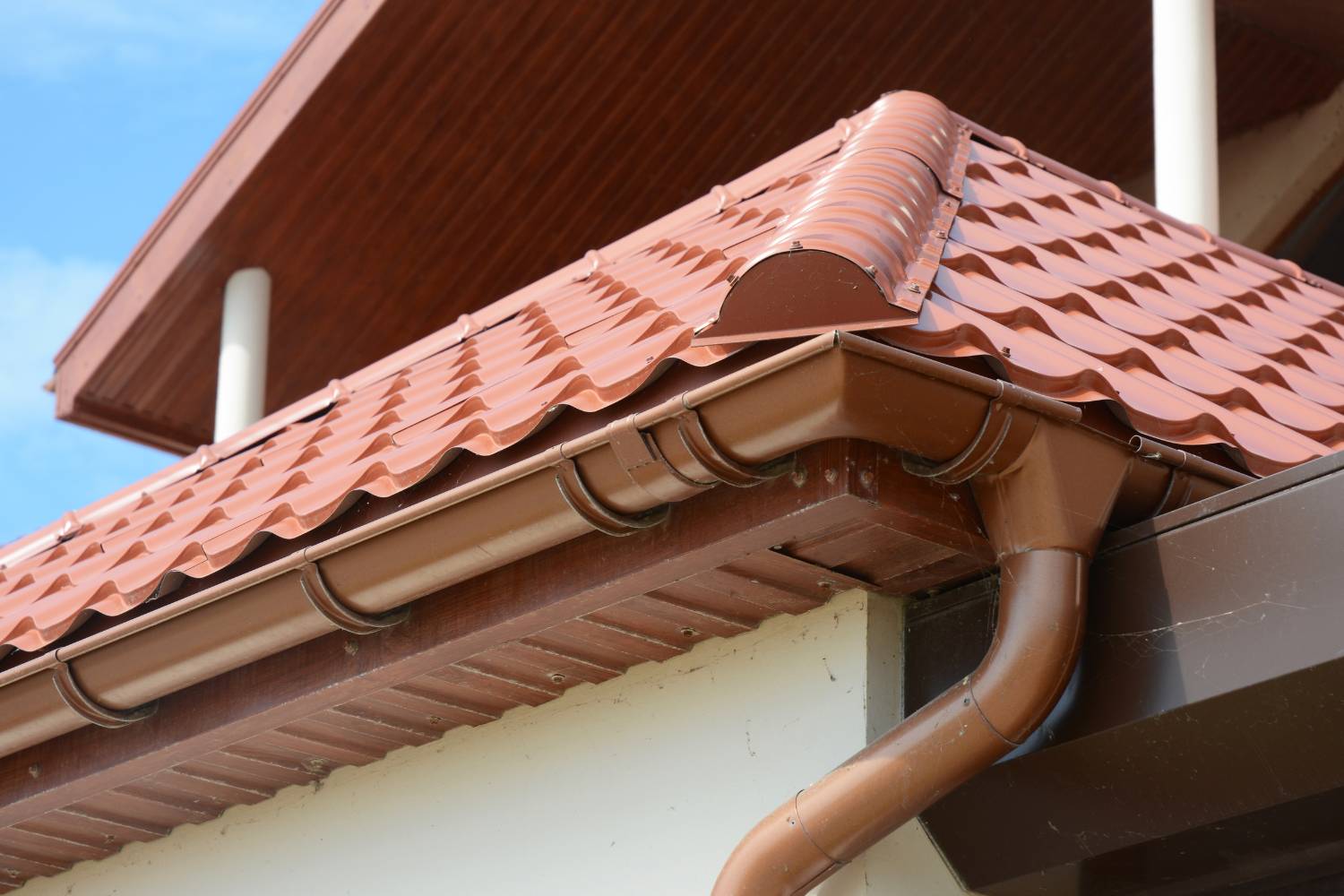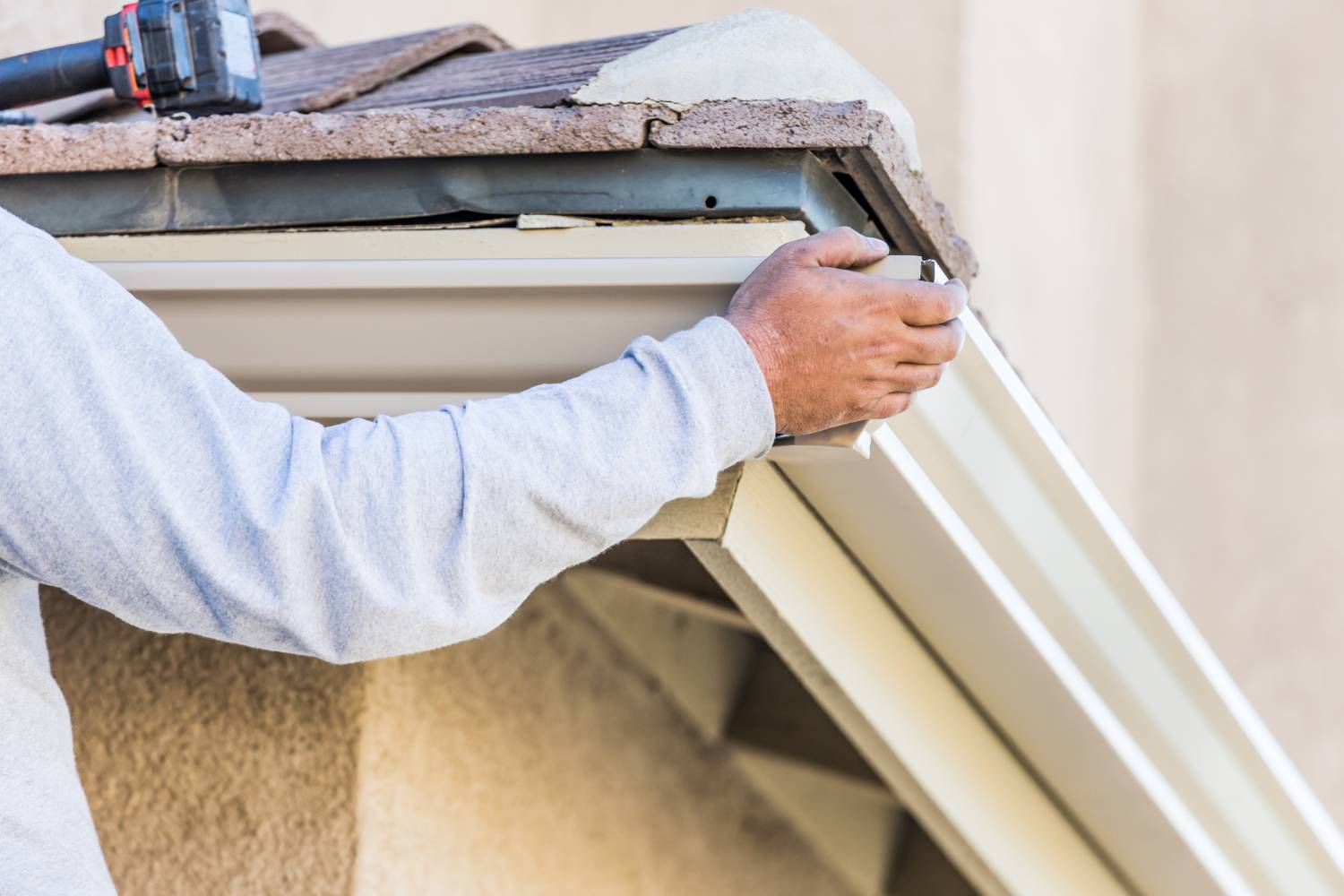Gutter systems are vital for protecting your home from water damage by effectively channelling rainwater away from the foundation. Over time, gutters can develop leaks, leading to significant issues if not promptly addressed. In this comprehensive guide, we'll explore the signs of a leaking gutter system, the importance of regular maintenance, and the steps to repair leaks and replace damaged sections.
From identifying visible water leakage to preparing for professional repairs, this guide covers everything you need to know to keep your gutter system in top condition. Whether you're a DIY enthusiast or considering professional assistance, understanding the basics of gutter maintenance and repair will help you safeguard your home from potential water damage. Let's dive into the key indicators of a leaking gutter system and learn how to address these issues effectively.
Signs Of A Leaking Gutter System
Regularly inspecting and maintaining your gutter system is essential to prevent water damage to your home. If you notice any of these signs, it's crucial to address the issues promptly to avoid more extensive and costly repairs. For professional assistance, consider contacting a gutter repair specialist to ensure your gutter system is functioning correctly and efficiently.
Maintaining a functional gutter system is crucial for protecting your home from water damage. Leaking gutters can lead to significant issues if left unaddressed. Here are some key signs that indicate your gutter system may be leaking and in need of repair:
Visible Water Leakage
Water dripping or streaming from the gutters during rainfall is a clear indication of leaks.
Cracks And Damage
Inspect for cracks in the gutters or any sections that are pulling away from the house. These physical damages can cause leaks.
Water Stains
Water stains on the fascia, which is the board behind your gutters, suggest that water is leaking from the gutters.
Overflow During Heavy Rain
If water spills over the edges of the gutters during heavy rain, this could mean that the gutters are clogged or improperly aligned.
Pooling Water Around Foundation
After a storm, large pools of water around your home's foundation indicate that the gutters are not effectively directing water away from the house.
Protruding Nails
Nails sticking out or popping out from the gutters can disrupt the alignment and cause leaks.
Unwanted Growth
The presence of plants or animal nests in the gutters is a sign of poor maintenance, leading to potential clogs and leaks.
Basement Flooding
Persistent pools of water or flooding in the basement can be a result of failing gutters.
Cracks In Sidewalks And Driveways
Water leaking from gutters can seep into the ground and cause cracks in the sidewalk, driveway, or foundation over time.
Lines On The Ground
Lines or channels on the ground directly beneath the gutters indicate that water is not being properly diverted away from the house.
Exterior Paint Damage
Flaking or peeling paint on the exterior of your home suggests ongoing water leakage from the gutters.
Rotting Wood
The rotting of wooden structures such as windowsills, garage doors, or decks can be caused by continuous exposure to water from leaking gutters.
How Do I Prepare For Gutter Repair?
Proper preparation for gutter services can lead to a smoother, more efficient process and optimal results. By assessing your needs, choosing a reputable provider, and ensuring a clean working environment, you can help ensure the success of your gutter repair or installation project.
When it comes to gutter repair and installation, proper preparation can make a significant difference in the efficiency and success of the project. Here are some essential steps to ensure you're well-prepared for any gutter services:
- Assess Your Gutter System: Inspect your current gutter system for signs of damage such as leaks, sagging, or clogging. Take note of specific issues to discuss with the service provider.
- Determine Your Needs: Decide whether you need a new installation, repairs, cleaning, or upgrades like gutter guards. Clearly define your needs to communicate effectively with the service provider.
- Research Service Providers: Look for reputable gutter service providers in your area. Check reviews and testimonials to gauge their reliability and quality of work. Compare quotes and services to find the best fit for your needs.
- Schedule an Appointment: Once you've chosen a provider, schedule your service appointment. Be prepared to discuss your specific needs, preferred dates, and any questions you may have. Booking in advance ensures you get a convenient time slot.
- Clear Obstructions: Remove any obstructions around your home that could hinder access to the gutters. Trim overhanging branches, move outdoor furniture, and clear pathways for a safe and efficient working environment.
- Provide Access: Ensure easy access to your home's exterior and the areas where the work will be performed. Unlock gates or doors and remove any obstacles that could impede the workers.
- Communicate with the Service Provider: Maintain open communication throughout the process. Be available to answer questions and provide access as needed. Clear communication helps keep the project on track and ensures any issues are promptly addressed.
- Prepare for Post-Service Clean-Up: After the service is complete, be ready to clean up any debris or materials left behind. Inspect the work to ensure it meets your satisfaction. Address any concerns with the service provider before they leave.
How Do I Replace Damaged Sections Of My Gutter System?
When a section of your gutter system becomes damaged, timely repair or replacement is crucial to maintain its functionality. Here's a comprehensive guide on how to replace damaged sections of your gutter system effectively and safely:
Safety First
Ensure your ladder is stable and placed on firm, level ground. Use a ladder stand-off to avoid placing the ladder against the gutter. Wear safety gear such as gloves and safety glasses, and have someone hold the ladder for added stability.
Tools And Materials Needed
You will need a cordless drill, hacksaw, tin snips, putty knife, wire brush, tape measure, marker, ladder, and level. Materials include replacement gutter sections, fascia hanger brackets, gutter slip joint connectors, gutter end caps, gutter sealant, and stainless steel screws or rivets.
Preparing The Area
Clean the existing gutter by removing debris using a garden hose and a putty knife. Use a wire brush to scrub away any rust spots and let the area dry. Remove the old gutter section by using a cordless drill or screwdriver to remove the brackets and screws holding the damaged section. Insert spacers to keep the remaining gutter sections in shape.
Measuring And Cutting
Measure the replacement section by measuring the length needed for the new gutter section. Using tin snips or a hacksaw, cut the new gutter section to the correct length, ensuring to maintain a straight line. For aluminium gutters, file down any sharp edges.
Installing The New Section
Apply gutter sealant to both sides of the new section to prevent leaks. Attach the new section to the existing gutters, securing it with stainless steel screws or rivets. Avoid placing screws at the bottom of the joints to prevent leaks. Reattach any fascia hanger brackets as necessary, ensuring they are spaced no more than three feet apart for adequate support.
Ensuring Proper Slope
Use a level to ensure the gutter has a slope of a quarter inch for every 10 feet to allow proper drainage.
Repairing Holes And Cracks
For small holes, apply roofing cement or gutter sealant with a putty knife over the hole. For larger holes, use metal flashing, cutting it to cover the hole with an overlap, and securing it with roofing cement.
Fixing Sagging Gutters
Identify and replace any defective gutter hangers. Ensure the hangers are no farther than three feet apart for adequate support.
Dealing With Leaks Behind Gutters
If water is leaking behind the gutters, install a gutter apron by tucking it under the shingles and fastening it over the gutter with sheet metal screws.
Reattaching Downspouts
Clean the downspout and reattach it, applying a thin line of caulk where it connects to the gutter. Secure it with screws and brackets.
Conclusion
Regular maintenance and timely repairs are key to ensuring your gutter system effectively protects your home from water damage. By staying vigilant for signs of leaks and addressing them promptly, you can prevent more extensive and costly repairs down the line. Whether you choose to tackle the repairs yourself or hire a professional, understanding the steps involved will help you maintain a functional and efficient gutter system.
With the right approach, you can keep your home safe from the damaging effects of water, ensuring its longevity and structural integrity. Take the time to inspect and care for your gutters, and enjoy the peace of mind that comes with a well-maintained home.
Frequently Asked Questions
Visible water leakage, cracks and damage, water stains on the fascia, overflow during heavy rain, pooling water around the foundation, protruding nails, unwanted growth, basement flooding, cracks in sidewalks and driveways, lines on the ground beneath the gutters, exterior paint damage, and rotting wood are all common indicators of a leaking gutter system.
Ensure your ladder is secure and placed on firm, level ground. Use ladder stabilisers and a ladder stand-off. Wear safety gear like gloves and safety glasses. Consider using a scaffold tower for a safe working platform. Always have someone hold the ladder for added stability.
You will need a cordless drill, hacksaw, tin snips, putty knife, wire brush, tape measure, marker, ladder, level, replacement gutter sections, fascia hanger brackets, gutter slip joint connectors, gutter end caps, gutter sealant, stainless steel screws or rivets.
Regularly inspect and maintain your gutters. Clean out debris, check for and repair any damage promptly, ensure proper alignment and slope, install gutter guards to prevent clogs, and ensure downspouts are clear and properly attached.
If the damage is extensive, if your gutters are more than 20 years old, or if you are uncomfortable with heights and using ladders, it's best to hire a professional. Professional repair ensures the job is done safely and correctly, preventing further complications.


